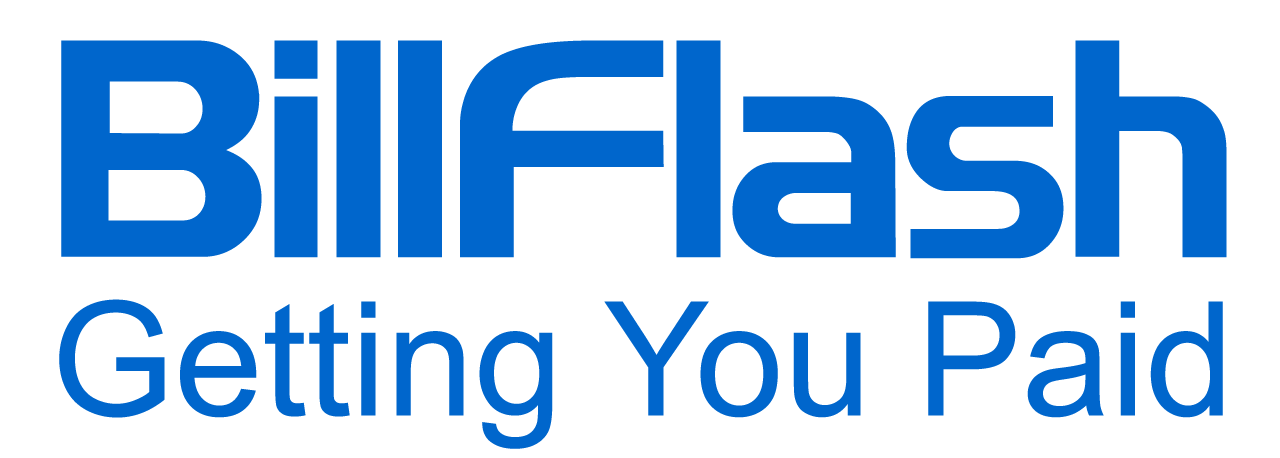Read on as we share five of the most common payment collection mistakes and strategies to help your practice avoid them.
What if one mistake costs your practice thousands of dollars in unpaid bills monthly? For many medical and dental practices, it’s not a matter of ‘what if’—it’s reality. Every day, mistakes in payment collection lead to significant revenue losses. In an industry where every dollar counts and patient care is the priority, letting revenue slip away due to avoidable mistakes isn't just frustrating—it's unsustainable.
But it doesn't have to be this way. By identifying the root causes—whether it's offering limited payment options, using outdated manual processes, or working with the wrong vendor (or too many vendors)—practices can correct these mistakes, reclaim lost revenue, and refocus on what matters most: delivering excellent patient care.
Today, we will share five common payment collection mistakes and effective ways to improve the patient experience, focusing on getting paid faster and enhancing communication.
Mistake #1: Relying Too Heavily on Manual Billing Processes
Manual billing processes, which 87% of providers use, often lead to mistakes like incorrect charges or missed payments. This reliance introduces risks like lost time and inconsistent follow-ups, leading to increased staff responsibilities. Providers typically spend about 15.5 hours weekly on paperwork and administrative tasks. With up to 80% of medical bills containing errors, there is a serious need for more accurate, efficient, and automated billing solutions.
These payment collection errors are not minor inconveniences—they lead to substantial revenue loss, with providers losing an estimated $5 million per year due to poor billing practices. Even a single typo in a patient's billing address can delay payments by weeks. With 74% of providers revealing that collecting patient payments can take more than one month, this creates additional complications for a practice's cash flow and revenue cycle management.

How to Avoid It
Automation is the key to overcoming this mistake. Automating your billing processes eliminates the risks associated with human errors and inefficient manual tasks. Automated systems can improve accuracy, reduce administrative workloads, and improve cash flow. These systems ensure that payments are processed on time, staff doesn't have to spend so much time on one task, and the overall financial health of the practice is strengthened. This level of modernization also creates a better patient experience by offering convenient, around-the-clock payment options.
Modern payment collection platforms like BillFlash offer complete automation tools that can:
- Generate and send electronic statements in just a few clicks.
- Implement automatic payment reminders based on customizable schedules (such as sending up to three text and three email reminders monthly until the bill is paid).
- Provide a 24/7 online payment portal for patient convenience.
- Track all billing activities in a real-time dashboard.
- Reduce human error through integrated systems.
By automating these processes, practices typically see a reduction in accounts receivable days and significantly lower their billing staff workload. The transition from manual to automated billing is much more than a technological upgrade—it's a strategic move that directly impacts cash flow and operational efficiency.
Mistake #2: Offering Limited Payment Options
In the digital age, patients expect various payment options that suit their preferences. Unfortunately, many medical and dental practices use outdated, one-dimensional payment collection methods. The lack of changes has not gone unnoticed, with 70% of consumers considering healthcare the most challenging industry for making payments.
Limited payment options can lead to several issues, such as:
- Delayed Payments: Delays are bound to occur when patients are forced to use inconvenient payment methods.
- Patient Frustration: A lack of flexibility can leave patients feeling undervalued and frustrated, leading them to search for other providers.
- Reduced Loyalty: Up to 56% of patients might switch providers if better payment options are available. This affects revenue and damages long-term patient relationships.
- Impact on Cash Flow: When payment options are limited, steady revenue and reliability are compromised, potentially disrupting day-to-day operations.
So, when patients are offered only a few traditional payment collection methods like cash, checks, or basic credit card processing, the fundamental truth is overlooked: different patients have different financial situations and preferences. Plus, someone who can't pay with their preferred method might put off paying their bill, waiting for a more convenient option that never comes. Worse, they might skip follow-up appointments, costing you revenue and continuity of care.

How to Avoid It:
Broaden your horizons—and your payment collection methods. Since each limited payment option represents a missed opportunity to collect what's owed, as a provider, you have to start meeting patients where they are financially. Offer a variety of payment options, such as:
- In-office payments for those who prefer face-to-face transactions.
- Online portals for patients who are always on the go and prefer 24/7 access.
- AutoPay for recurring charges.
- Payment plans for patients with higher balances who prefer to pay over time.
Each option addresses a different need, making it easier for patients to say “yes” to paying on time. The benefits are clear: faster collections, happier patients, and fewer calls to patients asking them to pay their overdue balances. A system that supports this variety can simplify the process for your staff while improving satisfaction across the board. For instance, integrating digital payment collection methods like Apple Pay and Google Pay can make payment transactions faster and more secure while meeting patient expectations.
Providers like BillFlash that consolidate these options improve the experience for both staff and patients. For instance, AutoPay simplifies recurring charges by automatically deducting scheduled payments from a patient's chosen payment method, such as a credit card or bank account. Flexible payment plans improve affordability and increase the likelihood of full payment, as patients tend to stick to a monthly payment plan that fits their budget.
Mistake #3: Failing to Communicate Clearly With Patients
Unclear billing statements are a recipe for confusion. Patients are less likely to pay on time when they don't understand their charges. They consistently list confusing medical bills as a reason for delaying payment. Not every patient will call to ask questions about their bill because they may not know what questions to ask or feel uncomfortable reaching out for clarification. This can lead to frustration and anxiety, adding to the stress that often comes with needing medical care.
Lack of clear communication may cause patients to feel alienated, affecting their overall experience and relationship with the healthcare system. Poor communication won't just hurt cash flow—it will chip away at patient loyalty. A frustrated patient who can't understand their bill might vent to someone or leave a negative review, discouraging others from choosing your practice. Over time, this hurts the trust you've worked hard to build. Clear, consistent communication isn't just about improving payment collection; it's about showing patients you value their time and experience.

How to Avoid It:
Start with clarity. Don't generate patient statements that are too complex and confusing. BillFlash's eBills and mailed bills turn confusing medical bills into easy-to-understand communications that build trust. These bills aim to improve patient engagement by using straightforward language, providing detailed breakdowns of services and costs, and offering multiple payment options. The bills are simple and free from medical jargon so that every patient understands every piece of information on their bill. The result is greater financial transparency and improved patient satisfaction.
Automated email and text payment reminders ensure patients are always aware of what is happening, prompting them gently but effectively about upcoming or overdue payments. BillFlash's PayReminders streamlines billing by sending up to three text and email reminders monthly until the bill has been paid. Patients will be removed from the sequence upon payment, minimizing manual follow-up and additional confusion.
Financial transparency can be taken a step further through pre-visit billing. This allows you to send patients an estimate of their costs before their appointment, giving them time to prepare and pay in advance. By sending secure payment links via text or email before the visit, you can eliminate surprise bills—one of the most significant sources of patient fear. This proactive approach prevents surprises and builds trust, making payment collection an easier part of the patient journey.
Mistake #4: Not Addressing Patient Affordability
High deductibles and out-of-pocket costs have proven to be significant barriers to care—and payment collection. A study found that 47% of adults struggle to afford medical bills, often prioritizing other expenses. High medical bills continue to lead to more patients not paying, and unpaid balances mean lost revenue. However, some patients want to pay their bills but cannot pay the entire balance in one payment. Practices that ignore affordability issues risk losing patients to competitors or collections. It's a lose-lose situation: revenue takes a hit, and patients miss out on needed care. Ignoring this reality doesn’t make it disappear—it only worsens the problem.
How to Avoid It
Flexibility is key in payment collection. Offer patient financing options that spread costs over time, making care accessible without adding more stress. A solution like a flexible payment plan can turn a $2500 medical bill into manageable monthly payments, encouraging patients to pay in installments while keeping your practice's cash flow steady. As the provider, this means fewer write-offs and more predictable income. For patients, it's peace of mind and a reason to stay loyal to your practice. This creates a win-win situation that bridges the affordability gap without compromising your practice's financial health.
Solutions like BillFlash FlexPay offer a solution by providing immediate payment to providers while allowing patients to pay in monthly installments. This approach ensures that providers receive full payment while maintaining patient affordability. FlexPay offers:
- Reliable Cash Flow: Practices receive full payment upfront, with funds initiated the next business day. This ensures a steadier cash flow while eliminating the risk of patient non-payment or delayed payments.
- A Quick and Easy Application: Patients can apply in less than a minute without a hard credit check, preserving their credit score. With a 90% approval rate, almost all patients can access patient financing options that fit their budget.
- Flexible Payment Options: Patients can spread their balances over manageable monthly installments, including 0% interest options, ensuring affordability for more patients.
- Improved Patient Experience: Uncomfortable payment discussions will be reduced, and patients will have greater peace of mind. Practices that implement FlexPay often see higher patient satisfaction and retention rates.

Why FlexPay Is a Win-Win for Providers and Patients
- It Helps Practices Attract More Patients: Offering financing options that appeal to cost-conscious patients helps differentiate your practice.
- It Helps Providers Retain Existing Patients: Flexible payment plans make care more accessible, fostering loyalty and trust.
- It Helps Providers Streamline Collections: BillFlash manages the entire payment collection process after the initial transaction, reducing administrative burdens for your staff.
- It Helps Increase Treatment Acceptance Rates: Patients are more likely to move forward with recommended treatments when they can pay over time.
By addressing affordability with solutions like FlexPay, practices can increase revenue while improving access to care for patients who need it most. This approach strengthens financial performance and builds stronger patient-provider relationships.
Mistake #5: Working With Multiple Vendors
Using multiple vendors for billing and payment collection can be exhausting and inefficient. Each system has its rules, logins, and support phone numbers, leaving your staff trying their best to keep up. Practices using three or more vendors for revenue cycle management see higher administrative costs than those with a single platform. When something goes wrong—like a payment not syncing or a report not generating—pinpointing the issue leads to the blame game between vendors.
This lack of integration doesn't just slow everything down; it creates significant holes in your workflow. For example, patient data might not transfer smoothly, leading to mistakes or duplicates. Eventually, patients will notice inconsistent experiences—like a bill on the payment portal that doesn't match their paper statement. Sharing confidential patient information with multiple vendors increases risks, such as data breaches. The result? A confusing situation that drags down efficiency and revenue.
How to Avoid It:
Consolidate workflows into one platform. A single platform that handles billing, payments, and collections cuts the confusion. This gives your practice one platform to learn and one point of contact for support. BillFlash provides an all-in-one solution that integrates seamlessly, simplifying workflows and improving the patient-provider experience. It works with over 100 billing applications, ensuring compatibility with existing systems and reducing the need for ongoing coordination by offering unified reporting. Through process consolidation, BillFlash minimizes delays, improves efficiency, and guarantees consistent workflows.
Benefits of Partnering With BillFlash Include:
- Simplified Workflows: A single platform means one consistent process from start to finish.
- Better Support: One vendor provides a dedicated support team, reducing the confusion of dealing with multiple contacts.
- Better Data Visibility: Consolidation leads to unified patient data streams that provide better insights into your practice's financial performance.
- Cost Savings: Reduce the overhead associated with managing multiple systems and vendors.

Avoid the Mistakes, Collect More Payments
Payment collection doesn't have to hold your practice back. By being more aware of these five common mistakes, you can take the steps to integrate a more effective, efficient payment collection approach. Automation, flexibility, clarity, affordability, and consolidation are the key ways to improve your practice. Modernizing your payment collection strategy also pays off in real terms: faster payments, lower administrative stress, and a patient experience that encourages repeat visits.
Ready to see the difference? Schedule a demo with BillFlash today and discover how our all-in-one billing, payment, and collection platform can improve your revenue cycle.

